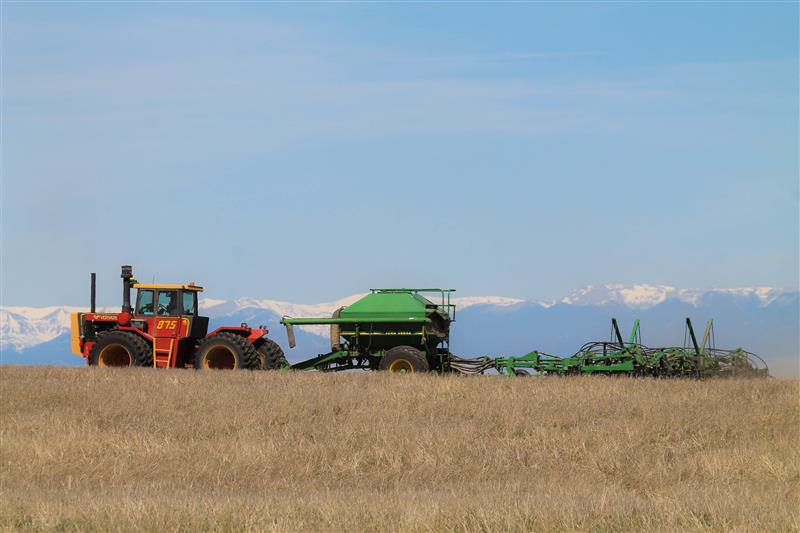OMAHA (DTN) — Farm groups took to social media on Thursday as part of a last-ditch effort to get the Trump administration to back off trade tariffs the administration is expected to implement against China on Friday. The groups fear China could bounce right back with tariffs against U.S. agricultural commodities.
The farm groups, led by the American Soybean Association, started tweeting out with other business groups under the hashtag #TradeNotTariffs. Tweets with that hashtag started coming from ASA, the National Association of Wheat Growers, National Corn Growers Association, the Corn Refiners Association, the American Farm Bureau Federation and the Agricultural Equipment Manufacturers, as well as state affiliates of these groups and the U.S. Chamber of Commerce.
“ASA is kind of leading the charge here,” said the group's spokeswoman, Jessica Wharton. “We need everybody on board to know, including Congress and the president, that we need trade, not tariffs.”
The Trump administration is using Section 301 of the Trade Act of 1974 to implement tariffs against China, mainly over Chinese theft of intellectual property. The end game for these tariffs was for China to come to the trade table and allow more U.S. investment in China, reduce import restrictions and address intellectual property theft. Little, though, has advanced since initial trade talks late last month in China.
Friday was a date set by the Trump administration to announce specific tariffs and restrictions against China, which include a 25{665a3d7248b9690333c4195c142b942e2311c5bd36bcf4da0d19dbcb5cbdf347} tariff on $50 billion in products that involve “industrially significant technology.” The actual list of products to be targeted is pegged to be released Friday, and the tariffs, according to the White House, “will be imposed on those imports shortly thereafter.”
Along with the tariffs, the Trump administration will restrict investment by China in specific industries and technologies, but those restrictions may not be fully detailed until the end of the month.
Further, the U.S. will continue pressing against China in the World Trade Organization regarding theft and abuse of intellectual property rights.
The counterpunch from China is directly targeting agricultural exports from the U.S. with a 25{665a3d7248b9690333c4195c142b942e2311c5bd36bcf4da0d19dbcb5cbdf347} tariff on $50 billion in U.S. products, which includes soybeans at the top of the list. Soybean exports to China accounted for roughly $14 billion last year. Another roughly $2.5 billion in U.S. products would see a 25{665a3d7248b9690333c4195c142b942e2311c5bd36bcf4da0d19dbcb5cbdf347} tariff increase, including corn and corn products, wheat, sorghum, cotton, beef and beef products, cranberries, orange juice, and tobacco and tobacco products, according to the USDA Foreign Agricultural Service.
China, though, when it announced its tariff response, did not specify when it would implement any of its tariffs.
Further, this tariff dispute is separate from the ones that the Trump administration announced against countries for steel and aluminum imports that have upset Canada, Mexico and European Union trading partners. Those tariffs have gone into effect and are leading to retaliation at various U.S. exports, including Mexican tariffs on U.S. pork.
Back in April when the tariff salvos began between the U.S. and China, President Donald Trump also gave orders to Agriculture Secretary Sonny Perdue “to use his broad authority to implement a plan to protect our farmers and agricultural interests.” Congress set up USDA to increase emergency spending in March by removing restrictions on the Agriculture secretary's ability to use emergency funds in a federal spending bill.
DTN Grains Analyst Todd Hultman noted that soybeans are facing a number of bearish hurdles in June, starting with the Chinese trade dispute. The trade dispute comes as Brazil's record soybean harvest in early 2018 limited the bullish potential of Argentina's drought and is helping China avoid buying U.S. soybeans this summer. Favorable Midwest weather since late April has given the new U.S. soybean crop a good start and may have allowed more acres to be planted than the 89.0 million USDA estimated in March. On top of all that, noncommercial traders that have been heavily net long in soybeans early in 2018 are now having to liquidate positions that are losing money rapidly.
The trade dispute has already affected U.S. soybean exports to China. Accumulated sales for the marketing year are down 7 million metric tons, or 257 million bushels, from this time last year, according to USDA. Some of the slack has been picked up by sales elsewhere, but U.S. soybean exports overall are 174 mb behind last year's pace.
Rabobank issued a brief report Thursday citing that the U.S.-China trade dispute, coupled with Argentina's drought, increased Brazil's soybean prices during harvest, though prices have backed off in recent weeks. The risk of tariffs on U.S. soybeans, however, still makes higher-priced Brazilian soybeans look more attractive to Chinese buyers.
Ohio State University released a report Wednesday stating farmers in that state “could lose more than half of his or her annual net income” if China imposes its tariffs. “There are farmers who are struggling across the state,” said Ben Brown, who runs the farm management program at Ohio State University's College of Food, Agricultural and Environmental Sciences. “If the proposed tariffs go into effect, we're going to have farmers who will have to exit the industry.”


